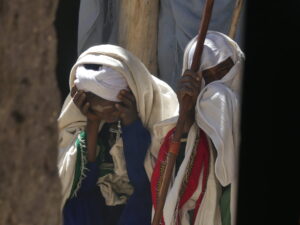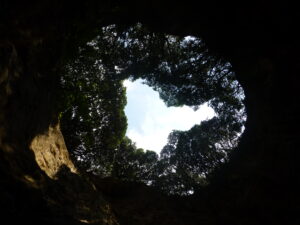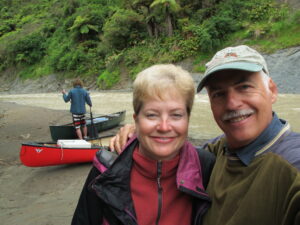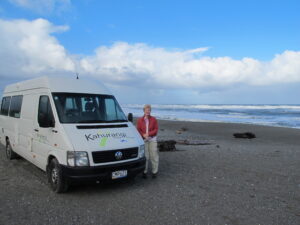
Just one of the many notable hikes that criss-cross Wellington and wander about the bottom of New Zealand’s north island is the City to Sea Walkway.
The Walkway climbs up and down the hillsides that encircle Wellington harbor, heading mostly southward and parallel to the harbor’s western shore, before escaping the central city to tumble into the sea.
Along the way, the variety of terrain is astonishing. During the trail’s nine miles, you cross four or five parks, numerous soccer fields, a couple of natural reserves, the Botanic Garden, several small bungalow-clustered suburbs and an historical cemetery. But mostly you remember the wilder parts.
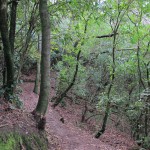
Within a few minutes of our house, I was suddenly in thick forest with not even a glimpse of the city below.

Then, after crossing the busy road up to Victoria University above us, I found myself in tiny Mount Street Cemetery, an unkempt and gloomy resting place for as many as 800 Catholic pioneer settlers from 1853. Still, where they all hid in that miniscule plot was a mystery to me.
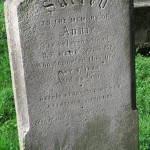
After continuing by way of some city streets, I was then in the 32 acre Central Park that separates Wellington from its suburbs to the south. The park contains the expected pedestrian-friendly lanes cutting though carefully cultivated woods, but at

other times looks and feels like a rain forest. And then suddenly it’s transformed into what seems a remote mountain passage. This same odd mix characterizes the next park south, the Prince of Wales, which starts out very civilized and urban before turning into a secluded forest hike along precipitous narrow tracks, then becomes meadowland with vistas over the town.
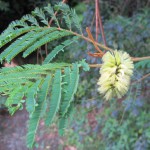
Since I got a late start, my trek covered only about a third of the way to the sea after about two hours. It’s quite a workout really: the part I did, and indeed the whole walkway, makes numerous ascents and descents in a range of 700 vertical feet. And even so, for most of the walk, you’re about as far from the central city as when you started. How odd that I was walking alone the whole time, having passed at most a dozen people though it was such a congenial Saturday.
The city tourist bureau offers a convenient map and guide charting the whole thing and identifying significant landmarks along the way. However, the guide doesn’t say much about Brooklyn, the tiny close-in suburb of Wellington tucked into knobby hills just south of the city and separated from it by Central Park. I was a bit puzzled about the name. I had guessed that some Dutch influence here caused the similarity of names with the New York borough. However, I learned from some Wikipedia research that, in 1888 when developers sliced up several farms into subdivisions of a town, they actually named the town for the American city. Perhaps the fame of the Brooklyn Bridge, completed just five years earlier, was the reason; I’ll have to hit the library in town to know for sure.

But the founding fathers of this Brooklyn, consistent with the admiration they had shown in naming this town for a patch of America, went even further and named many streets for American Presidents. To get to the center of town and its village shops, you just head up (George) Washington Street until you reach (Grover) Cleveland Street. That’s who was President in 1888. Then take a right and amble up to the intersection with (Thomas) Jefferson Street and (William Henry) Harrison Street. If you wander around a bit more, you’ll also find Garfield, McKinley, Taft, and Lincoln Streets. Later builders continued this peculiar tribute into the 1920s at least, by naming other streets for Coolidge and Hoover too.
Historical background aside, and as you might expect from the guide’s lack of interest in the town, there’s not much reason to head over to Brooklyn otherwise. But I would love to hail a taxi sometime, and command, “Cabbie, take Central Park to Brooklyn, but avoid the bridge…and step on it.”

The City to Sea Walkway avoids most of these streets as well, preferring to keep you on the woodsy and greener terrain. And so it was amid the wilds around Brooklyn, with cautious thoughts about the early winter sunset, that I turned back to find a more direct route to the city. To my surprise, I was back in the center of Wellington after just a half hour descent on Brooklyn Road.
Looking back up the road I could see how the trail worked its magic. The Walkway traverses the ring of hilltops around the harbor, peaks that were left densely forested to crown the towns in the valleys below. So you can leave the city behind, as you string together these greener spaces, while you never actually depart far from it.
(For more pictures from New Zealand, CLICK HERE to view the slideshow at the end of the New Zealand itinerary page.)



